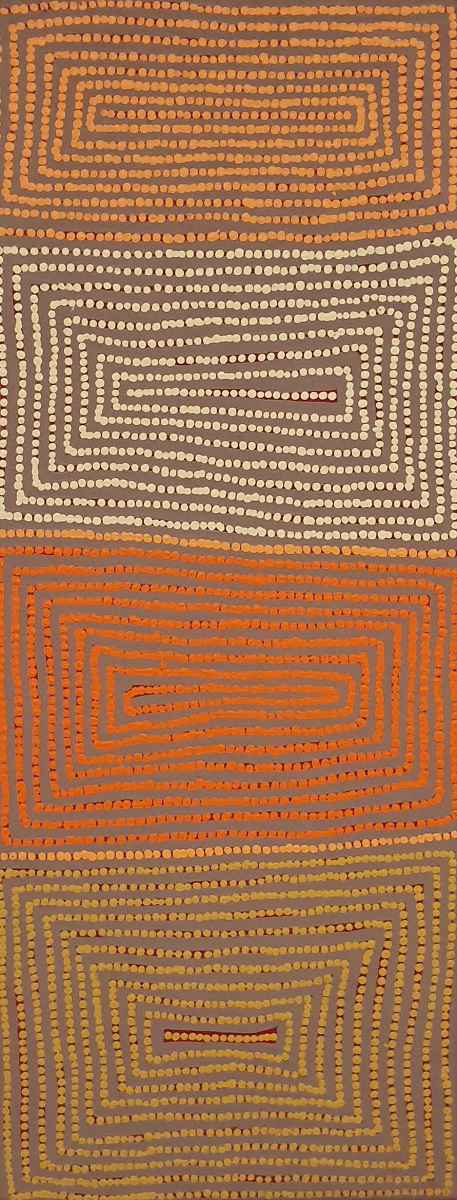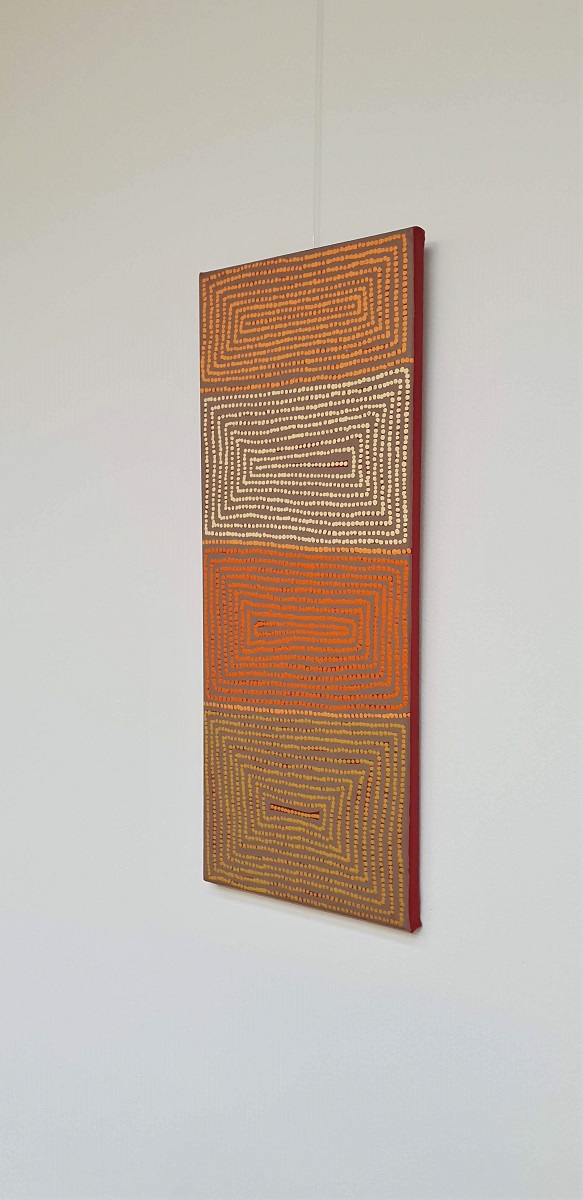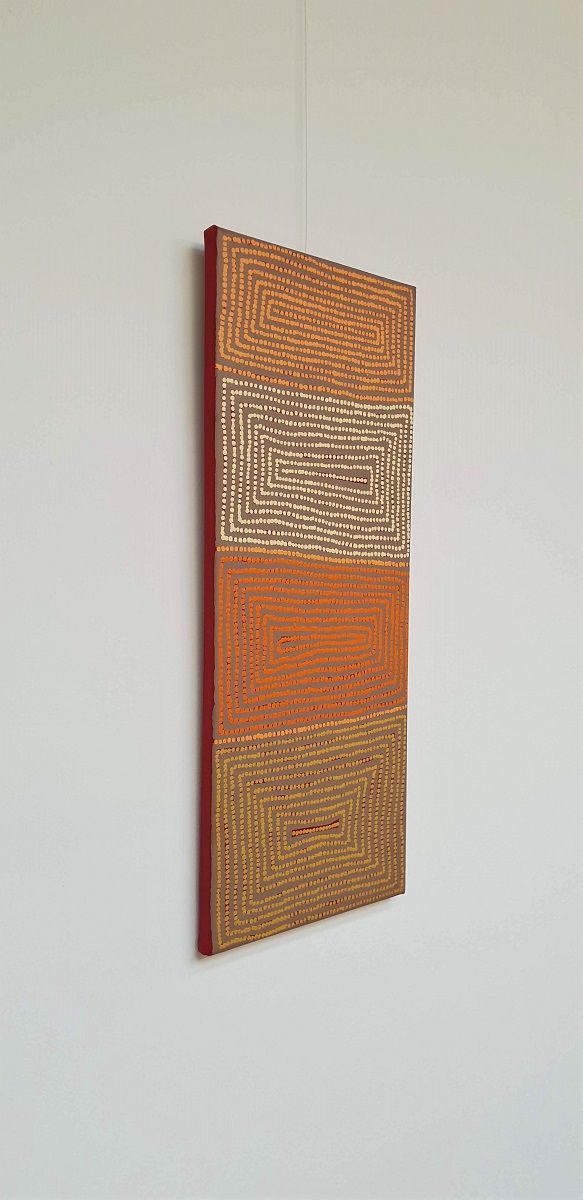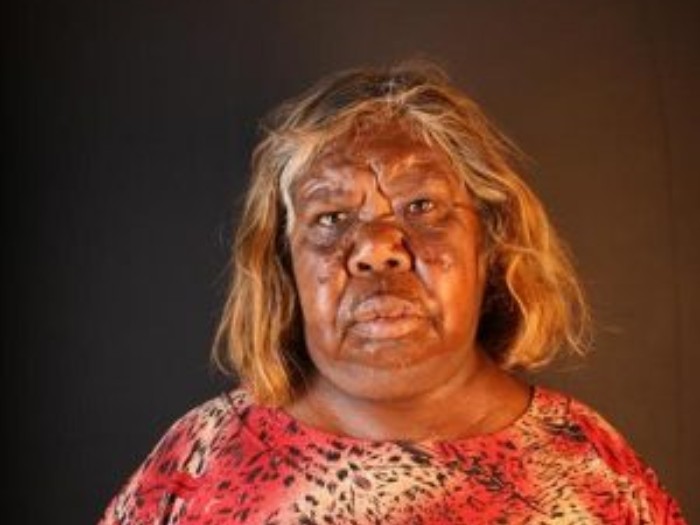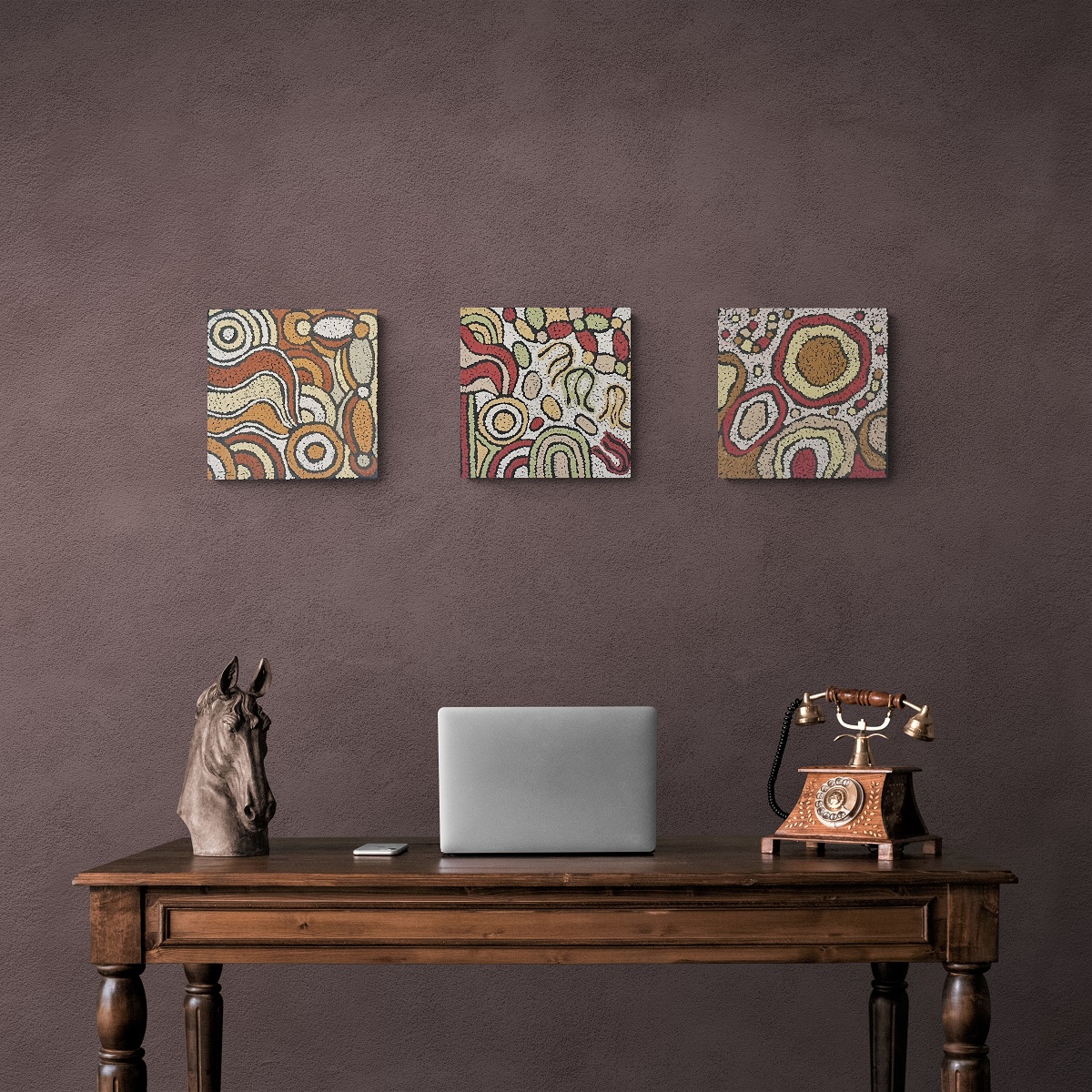Yumurrpa is a major waterhole to the northwest of Yuendumu and a ‘yarla’ (bush potato) Dreaming site. The area north of Wapurtali/Yintaramurru (Mt. Singleton) is a ‘wanakiji’ (bush tomato) Dreaming site.
Warlpiri women hunt for a number of different bush foods at different times of the year. These include ‘ngarlkirdi’ (witchetty grubs), ‘yunkaranyi’ (honey ants), ‘jintiparnta’ and ‘purlantarri’ (desert truffle), ‘yuparli’ (bush bananas), ‘janmarda’ (bush onions), ‘pirlala’ (bush beans), ‘ngarlajiyi’ (bush carrots), ‘wayipi’ (small bush carrots), and ‘yakajirri’ (bush raisins). Women traditionally dug for these foods using wooden ‘karlangu’ (digging sticks). The end of the digging sticks were charred and ground on a stone surface to create a bevelled edge. Today many Warlpiri women use crowbars (also called ‘karlangu’) to dig for bush foods. Collected bush foods are traditionally carried in ‘parraja’ (coolamons), which can be carried with a strap made from the ‘ngalyipi’ (snake vine).
In Warlpiri paintings, traditional iconography is used to represent the Jukurrpa and other elements. Concentric circles are often used to represent the bush foods that the women have collected, while straight lines can be used to depict the ‘karlangu’ (digging sticks). Sinuous lines are often used to represent the ‘ngalyipi’ (snake vine).
